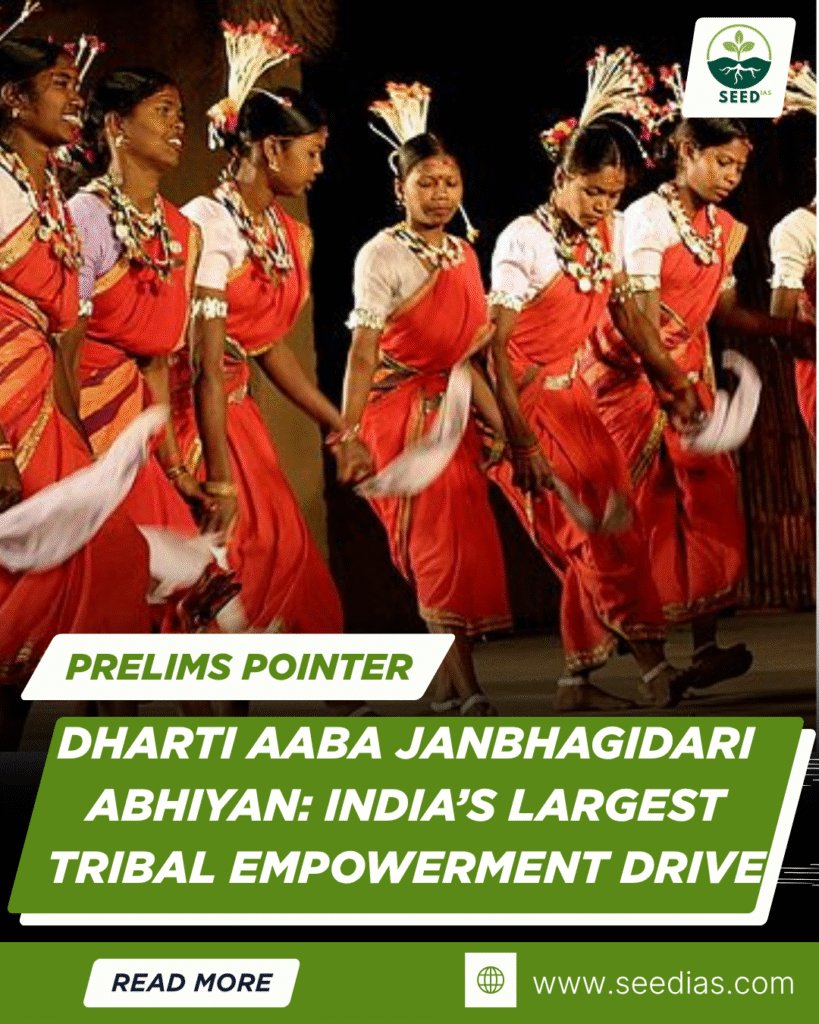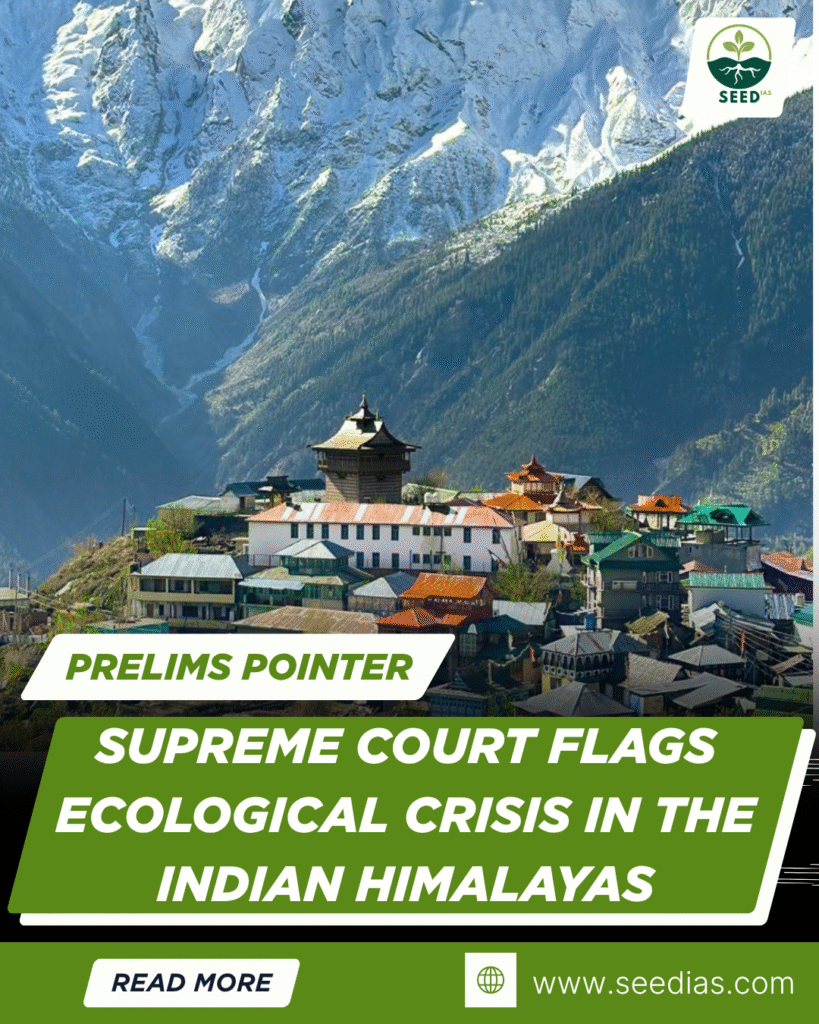Why in NEWS
The Ministry of Tribal Affairs has launched the Dharti Aaba Janbhagidari Abhiyan (DAJA), a historic tribal empowerment campaign reaching over 1 lakh tribal villages across 31 States/UTs, including 207 Particularly Vulnerable Tribal Group (PVTG) districts. It operates through a community-driven, camp-based model involving tribal youth, CSOs, local leaders, and district administrations.
Key Concepts & Terms
| Term | Description |
|---|---|
| DAJA | A tribal empowerment campaign under Janjatiya Gaurav Varsh, promoting rights, welfare, and inclusion of tribal communities. |
| PVTG | Particularly Vulnerable Tribal Groups—tribes with low literacy, economic backwardness, and isolation. |
| Janbhagidari | Public participation at grassroots, ensuring inclusive governance. |
| Birsa Munda (Dharti Aaba) | Tribal freedom fighter whose birth anniversary is commemorated through Janjatiya Gaurav Divas. |
5 Pillars of DAJA
| Pillar | Focus |
|---|---|
| Janbhagidari | Empowering communities to lead the initiative. |
| Saturation | Ensuring 100% coverage of government entitlements. |
| Cultural Inclusion | Respecting and promoting tribal languages, arts, and customs. |
| Convergence | Coordination across ministries, CSOs, and tribal youth. |
| Last-Mile Delivery | Reaching remote and PVTG areas with essential services. |
Objectives of the Campaign
| Aim | Implementation |
|---|---|
| Scheme Saturation | Covers Aadhaar, Ayushman Bharat, PM-Kisan, Ujjwala Yojana, Jan Dhan, tribal-specific rights. |
| Support Initiatives | Linked to PM-JANMAN and Dharti Aaba Janjatiya Gram Utkarsh Abhiyan (DAJGUA). |
| Cultural Revival | Revives tribal pride by honoring local traditions and leaders like Birsa Munda. |
Significance of Janjatiya Gaurav Varsh (2024–2025)
| Feature | Purpose |
|---|---|
| 1-Year Celebration | Launched on 15th November 2024, marking 150th birth anniversary of Birsa Munda. |
| Symbolism | Celebrates tribal identity, freedom struggles, and cultural richness. |
| Events & Outreach | Massive grassroots campaigns, cultural fests, service delivery drives. |
Other Key Tribal Welfare Initiatives
| Scheme | Objective |
|---|---|
| Eklavya Model Residential Schools (EMRS) | Provide quality education to tribal students in remote areas. |
| Van Dhan Vikas Kendras | Empower tribal forest dwellers through value addition of Minor Forest Produce. |
| Janjatiya Gaurav Divas | Celebrated annually on 15th November to recognize tribal contributions to nation-building. |
In a Nutshell (Mnemonic: “DAJA-SC”)
Dharti Aaba’s vision revived
All schemes saturation
Janbhagidari-led grassroots governance
Anthropological inclusion of culture and heritage
Service to remote tribal areas
Convergence of ministries and youth
Prelims Practice Questions
- Which of the following campaigns aims to saturate tribal villages with central government welfare schemes?
a) Vanbandhu Kalyan Yojana
b) DAJGUA
c) DAJA
d) PM-JANMAN - Dharti Aaba Janbhagidari Abhiyan is primarily associated with which tribal leader’s legacy?
a) Tantia Bhil
b) Birsa Munda
c) Alluri Sitarama Raju
d) Sidhu Murmu - Which of the following is NOT part of the 5 pillars of DAJA?
a) Janbhagidari
b) Saturation
c) Technological Innovation
d) Last-mile delivery
Mains Practice Questions
- Discuss the significance of Dharti Aaba Janbhagidari Abhiyan in strengthening tribal welfare and participatory governance in India. (GS 2 – Governance, Welfare Schemes)
- How can community-led models like DAJA bridge gaps in last-mile delivery in PVTG areas? Suggest improvements for better outcomes. (GS 2 – Social Justice, Vulnerable Sections)
Prelims Answer Key with Explanation
| Ques | Answer | Explanation |
|---|---|---|
| 1 | c | DAJA is the largest tribal empowerment campaign covering 1 lakh villages. |
| 2 | b | The campaign honors Birsa Munda, also known as Dharti Aaba. |
| 3 | c | Tech innovation is important but not one of the stated DAJA pillars. |
















